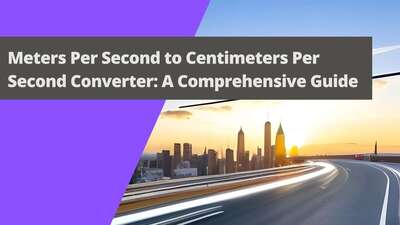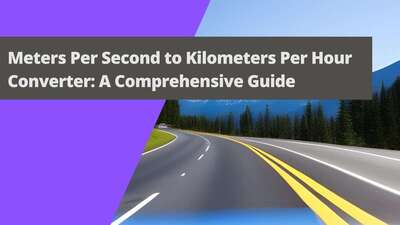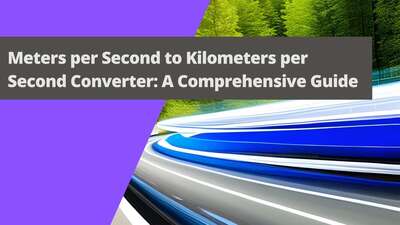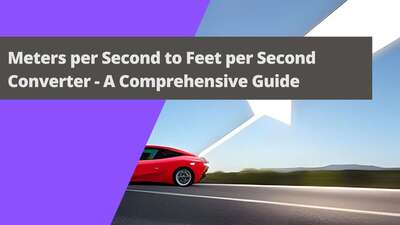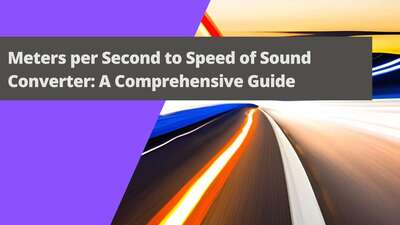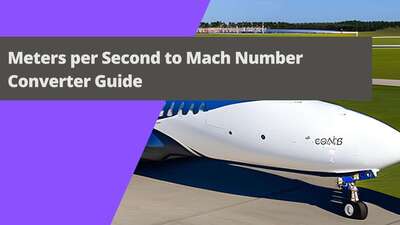Meters per Second Conversion: A Comprehensive Guide
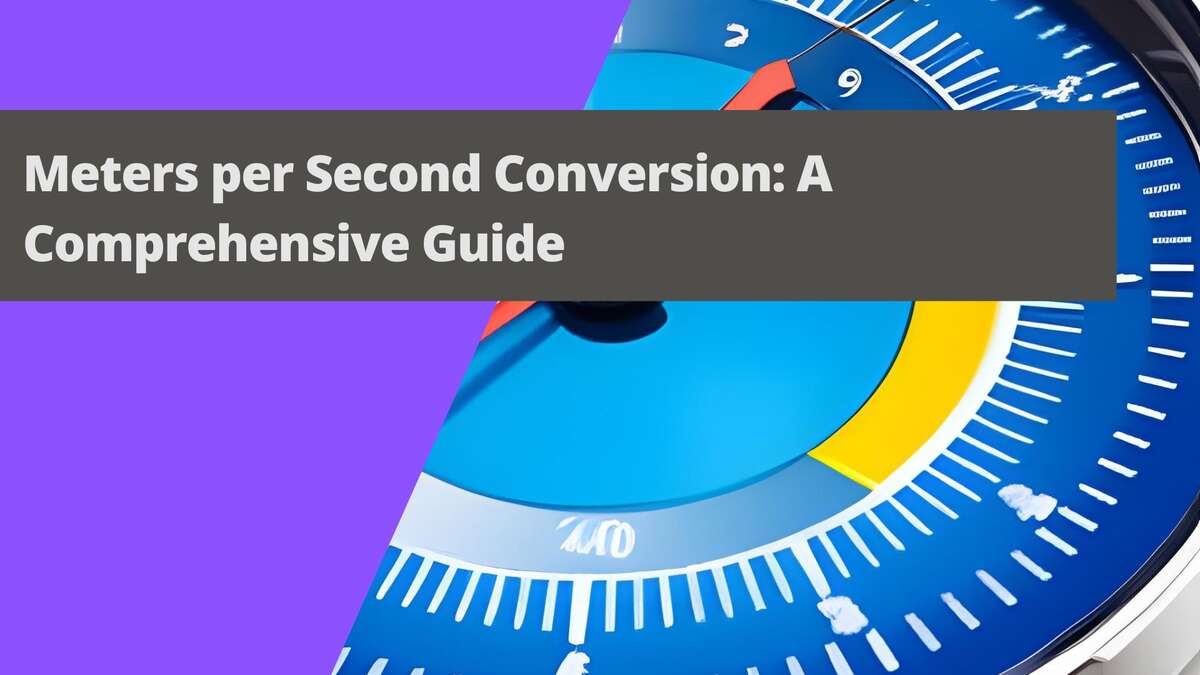
- Introduction: The Importance of Speed Measurements
- Definition: Understanding Meters per Second
- Explaining Meters per Second: Common Use Cases
- Formula: Calculating Meters per Second
- Conversion Factors and Table: Converting Meters per Second to Other Units
- Step-by-Step Guide: Converting Meters per Second to Other Units
- Real-world Examples and Applications: Practical Use of Meters per Second Conversion
- Frequently Asked Questions
- What is the importance of meters per second conversion?
- How do I convert meters per second to other units?
- Conclusion
In today's fast-paced world, understanding speed measurements is crucial for various applications, such as transportation, sports, and science. Meters per second (m/s) is a widely used metric unit of speed. In this guide, we will discuss meters per second conversion, covering essential aspects and providing a step-by-step guide for converting to other units of speed.
Introduction: The Importance of Speed Measurements
Speed measurements are an integral part of our daily lives, and meters per second is a standard metric unit of speed. Being able to convert meters per second to other units enables us to understand and compare various speeds in different contexts, such as aviation, maritime, and automotive industries.
Definition: Understanding Meters per Second
Meters per second is a unit of speed in the International System of Units (SI) that expresses the distance traveled in meters in one second. It can be abbreviated as m/s or m·s−1. Converting meters per second to other units helps us communicate and compare speeds across various domains.
Explaining Meters per Second: Common Use Cases
Meters per second is a versatile unit of speed, widely used in various fields, including:
- Physics and engineering: For understanding velocity and acceleration in mechanics
- Transportation: In automotive, aviation, and maritime industries for comparing and converting speeds
- Weather: For measuring wind speeds and understanding the intensity of storms
- Sports: For tracking and comparing the speeds of athletes and objects in motion
Formula: Calculating Meters per Second
To calculate the speed in meters per second, use the following formula:
vm/s = dm / tsec
Where vm/s represents the velocity in meters per second, dm represents the distance in meters, and tsec represents the time in seconds.
Conversion Factors and Table: Converting Meters per Second to Other Units
Conversion factors are numerical values used to change the units of a measurement without altering its value. To convert meters per second to other units of speed, multiply the value by the appropriate conversion factor. The following table presents common conversion factors:
| Unit of Speed | Conversion Factor |
|---|---|
| Knots | 1.94384 |
| Mach number | m/s ÷ speed of sound |
| Speed of sound | m/s to speed of sound percentage |
| Speed of light | m/s to speed of light percentage |
| Miles per hour | 2.23694 |
| Feet per second | 3.28084 |
| Kilometers per second | 0.001 |
| Kilometers per hour | 3.6 |
| Centimeters per second | 100 |
Step-by-Step Guide: Converting Meters per Second to Other Units
Follow these steps to manually convert meters per second to other units:
- Identify the desired unit of speed you want to convert to from the table above.
- Find the corresponding conversion factor for the desired unit.
- Multiply the meters per second value by the conversion factor.
- The result is the equivalent value in the desired unit of speed.
For more straightforward conversion, use online tools like AmazingConverter's Speed Converter.
Real-world Examples and Applications: Practical Use of Meters per Second Conversion
Converting meters per second to other units is essential in various industries and contexts:
- Aviation: Pilots need to understand and compare airspeeds measured in knots and Mach numbers.
- Maritime: Navigators use knots to gauge the speed of ships and communicate with other vessels.
- Automotive: Drivers often use miles per hour or kilometers per hour to comply with speed limits and compare vehicle performance.
- Weather forecasting: Meteorologists use different units, like meters per second, knots, or miles per hour, for wind speeds.
Frequently Asked Questions
What is the importance of meters per second conversion?
Meters per second conversion is essential for understanding and comparing speeds across various industries and contexts. Converting meters per second to other units helps us communicate and make decisions based on speed measurements.
How do I convert meters per second to other units?
To convert meters per second to other units, multiply the meters per second value by the appropriate conversion factor found in the conversion table. Alternatively, use online tools or mobile applications for more straightforward conversion.
Conclusion
Understanding meters per second conversion is vital for various applications, and beingable to convert between different units of speed enables us to communicate and compare speeds effectively. This comprehensive guide has provided you with the necessary information, conversion factors, and a step-by-step guide to perform these conversions. Keep in mind that online tools like AmazingConverter's Speed Converter can simplify the process and save time. By mastering meters per second conversion, you can better navigate the world of speed measurements in various industries and applications.
